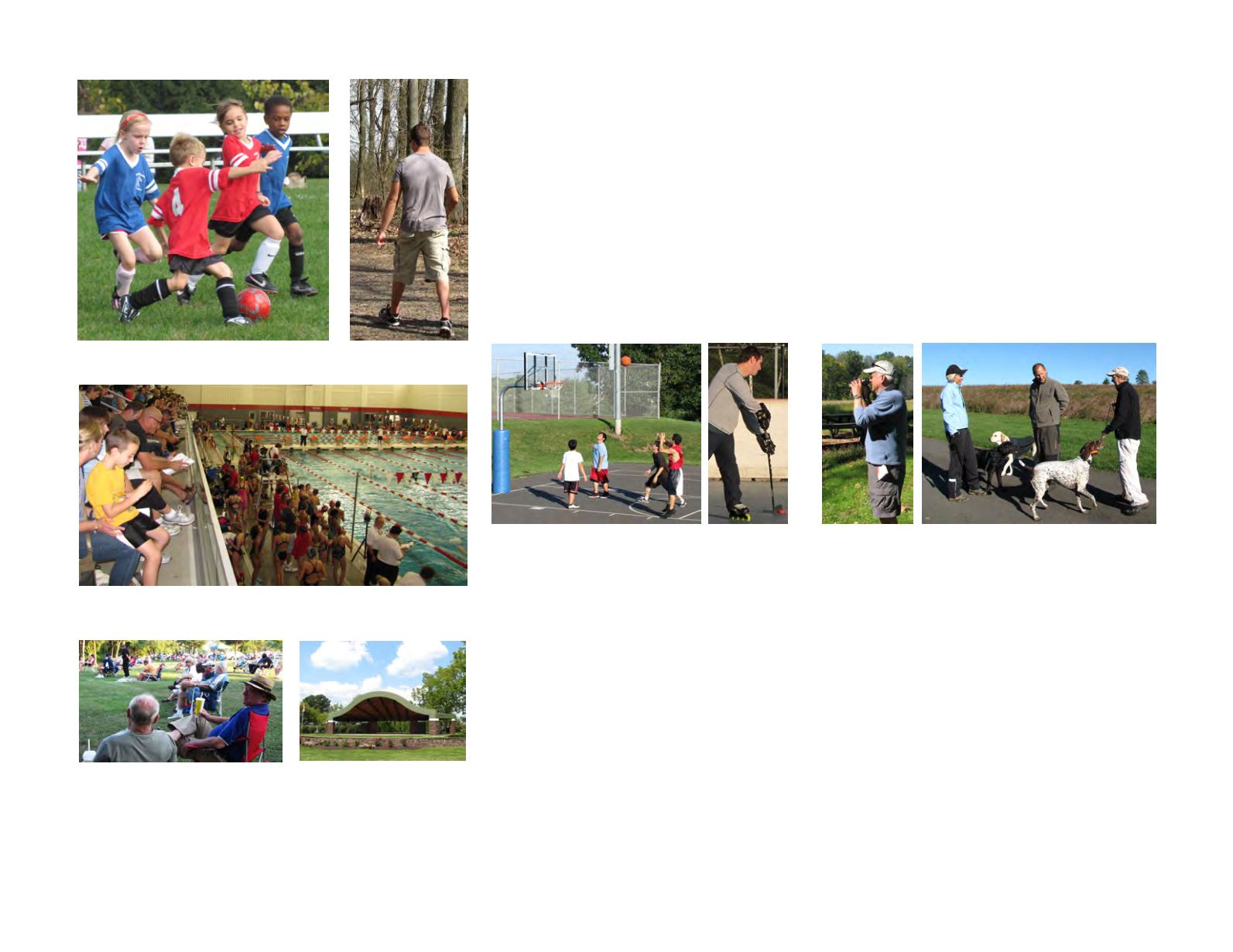
montgomery county today
79
Gathering places for activities like summer concerts, family picnics, or
community events can range from informal areas with little impact on a site
to large structures that require extensive construction. These places may
be intensely active or relatively passive in the type of recreation they
provide. Picnic areas are often located adjacent to tot lots, consolidating
ad hoc visits to the park in a relatively compact area.
Outdoor recreation takes advantage of all aspects of the outdoors, but its
use is dependent upon weather and time of year.
Indoor recreation requires extensive construction of facilities and
infrastructure but extends recreational opportunities year-round.
Active Versus Passive Recreation
Active recreation relies on engineered facilities for specialized purposes, all of which tend to attract
intensive use. These facilities include athletic fields, sports courts, amphitheaters or large pavilions,
destination playgrounds, skate parks, and aquatic centers. The user comes to a particular place because
of the facilities provided; construction of those facilities often has a significant impact on the land
resources where they are located.
Passive recreation, on the other hand, is generally less intensive in use and does not require extensive
constructed features. This type of recreation has a minimal impact on the site’s resources, often
allowing the site to provide positive ecosystem services. The activities provided tend to be “place-
based,” with people being attracted to the particular site’s natural attributes rather than its man-made
facilities. Activities generally considered passive in nature include bird watching and nature study,
hiking, walking and biking on trails, picnicking, fishing and canoeing or kayaking, and tent camping.
Who Provides Opportunities for Public Recreation?
Governmental entities are the most common providers of public parks, with national, state, and county
parkland in general being place-based and used primarily for passive recreation. Conservation
organizations are an additional major provider of passive recreational opportunities. Municipal
governments (in Montgomery County, both townships and boroughs) tend to provide a blend of active
and passive recreation facilities, particularly focusing on community parks, which may contain sports
fields and hard-surface courts, playgrounds, picnic pavilions and amphitheaters, swimming pools, and
increasingly, indoor recreation centers. School districts are a major provider of indoor recreation and
outdoor sports facilities, and private organizations, such as the YMCA, are becoming an increasingly
popular provider of indoor aquatic and fitness opportunities. These public or community-based
recreation providers are often complemented by the facilities of nonprofit sports associations, public golf
courses, and commercial sports and fitness sites.
Active recreation at sports courts.
Passive recreation at natural resource areas.


